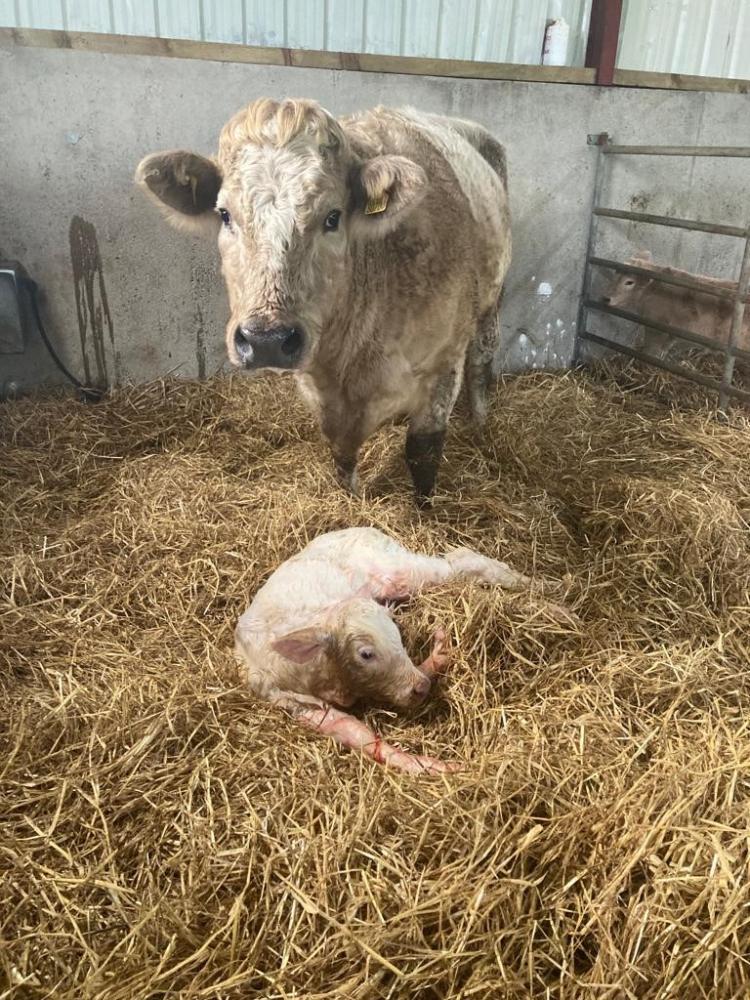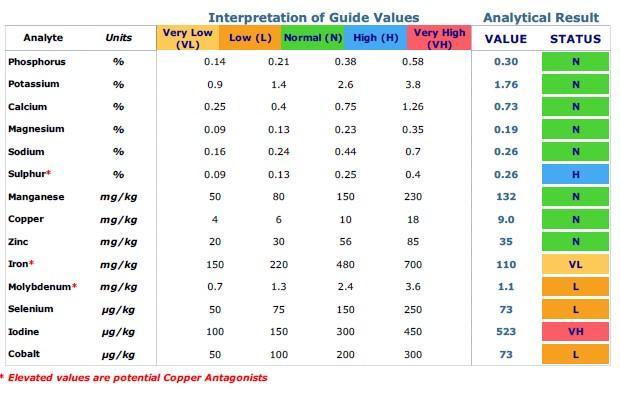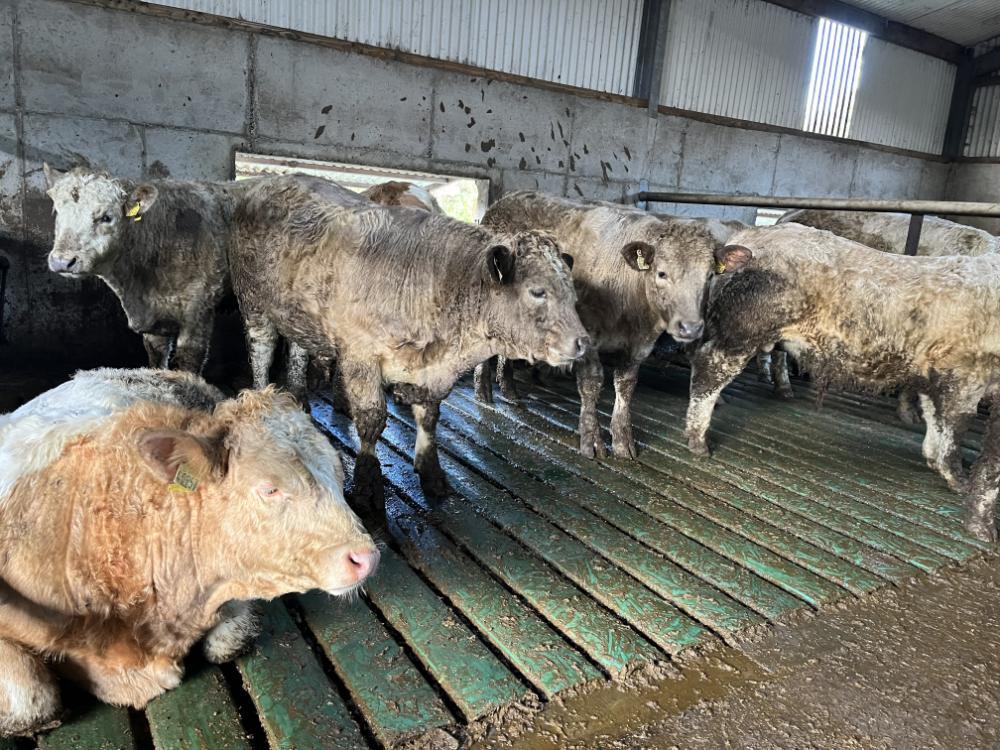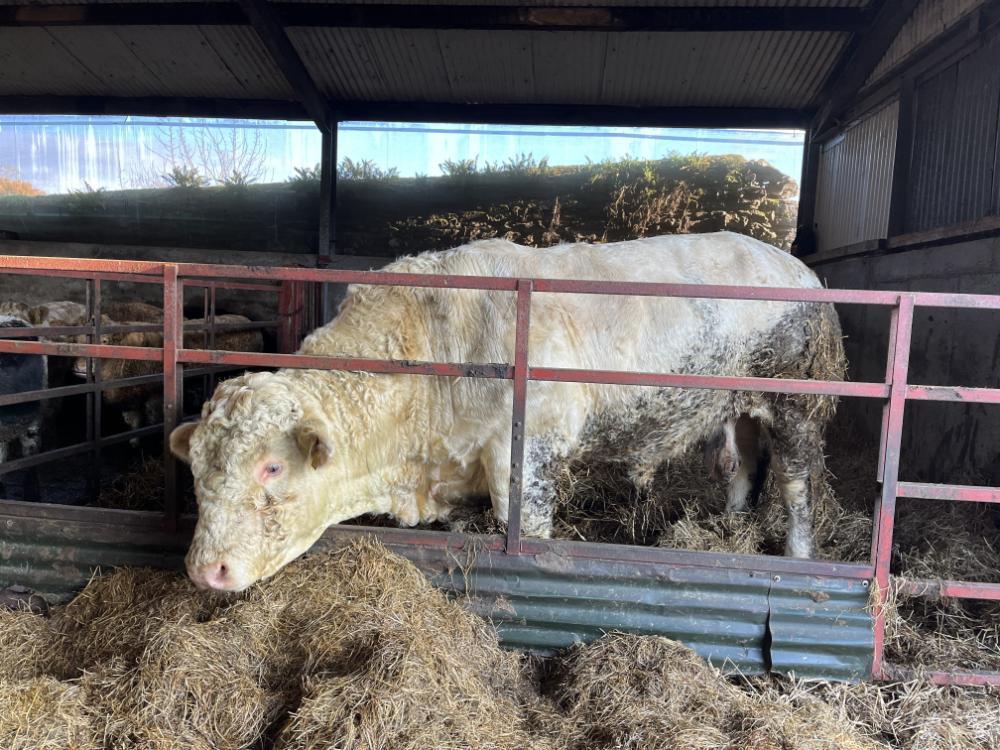Calving is just around the corner!
- Preparations for calving underway with cow management
- Calving equipment and facilities are being set up beforehand
- 3 in calf heifers purchased

Newborn calf from one of Ruairi’s Charolais stock bulls
Preparations for calving have been underway since Ruairi housed his cows in early November. They were housed according to body condition score; the thin cows, first calvers and in calf heifers are housed in one shed are fed better quality silage than the fatter cows that are being fed haylage. They were scanned and are due to start calving from 20th January until 31st March. In the lead up to calving Ruairi is;
Click on the video below to see Ruairi’s set up pre-calving.
Ruairi took a sample from his silage to analyse the mineral profile. The results as shown in Figure 1 below shows that the macro minerals (i.e. phosphorus, calcium, magnesium and sodium) were all at normal levels. The micro minerals were more variable with sulphur testing high, manganese, copper and zinc testing normal, a very high result for iodine and iron, molybdenum, selenium and cobalt testing low.

Figure 1: Mineral analysis results
Ruairi is feeding a complementary pre-calving mineral to the cows to meet their daily requirements. It is providing a good supply of selenium and cobalt – micro minerals that are low in the silage tested. The mineral is dusted along the silage and fed at a rate of 120 grams per head per day. The label for the mineral shows at this feeding rate it is providing the following minerals daily;
Macro minerals
Micro minerals
Vitamins
The macro minerals are not stored in the body and therefore have to be fed daily. Further information on the role of each mineral and suckler cow recommendations can be found at https://www.teagasc.ie/media/website/animals/beef/future-beef/Mineral-Reference-Sheet.pdf
It seems like 2023 has gone by in the blink of an eye! It was a challenging year but I think it makes us better farmers and more resilient when we know we can get through the speed bumps along the way.
Looking back on the calving season, it was laborious with the c-sections. However I’m hoping that this will be less of an issue next year as I will be moving the Charolais bull on that was the cause of them and will be investing in a new Charolais bull. Aside from that I was happy with the calving season as most of the cows calved themselves and produced good quality, lively calves.
Management of the herd in spring was tricky; the smallest heifers went out early in February and stayed out at grass from then. The cows went out in early spring, but had to be re-housed when the wet weather came in March. They didn’t return to grass until the very end of March, which would be late for our typically dry farm. There was a small touch of respiratory disease in the calves when they were re-housed but fortunately they were vaccinated and I think that this prevented any massive outbreaks. Grass yields were up almost 2.5 t dry matter per hectare this year versus 2022 and I’m glad to have the extra silage made as a result.
I was a little disappointed with the breeding season and expected more cows to be in calf. However the combination of the wet weather with the difficult calvings resulted in a number of early embryo losses and 7 cows out of 43 were not in calf when scanned. The ones that are in calf will have a short calving spread and I have bought some in calf heifers that are calving in February to join the herd. They have an average Eurostar value of €160 which is above my herd average of €123 and have good average daughter milk figures (11.15kg) and carcass weight (17.5kg).
The under 16 month bulls performed extremely well this year and hit a new record for the farm for carcass weight (408kg at 14.8 months), making €165 more than the 2022 bulls, while also eating less ration overall.

Figure 2: Spring 2023 born bulls
On reflection for the year the things that worked well were;
As always, there were things that didn’t work well;

Figure 3: The Charolais bull that caused the difficult calvings will be replaced for the 2024 breeding season